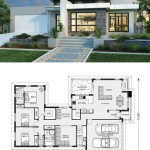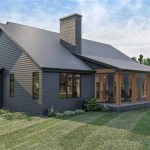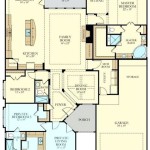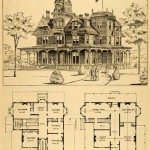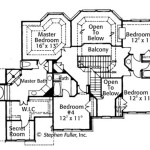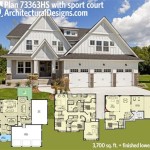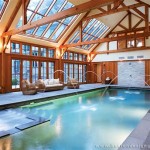Cape Style Home Floor Plans: An Overview
Cape Cod style homes, originating in 17th-century New England, are characterized by their simple, functional, and aesthetically pleasing designs. Their enduring popularity stems from their ability to provide comfortable and efficient living spaces, often adaptable to various needs and preferences. Understanding the core elements of a Cape style home floor plan is essential for both prospective buyers and those planning renovations or new construction.
The architectural style of Cape Cod homes emerged as a response to the harsh climate and limited resources of early colonial settlements. Practicality was paramount, leading to compact footprints, low-pitched roofs, and minimal ornamentation. Over time, the style evolved, incorporating various additions and modifications while retaining its fundamental characteristics. Today, Cape Cod homes remain a popular choice, offering a blend of traditional charm and modern functionality.
Effective use of space is a defining characteristic of Cape style home floor plans. The original designs prioritized maximizing living area within a small footprint, often featuring a central chimney and a symmetrical layout. Modern adaptations often expand upon this foundation, incorporating open-concept living areas and integrated amenities while still maintaining the inherent efficiency of the Cape Cod design.
Key Elements of a Cape Cod Floor Plan
Several distinguishing features define a typical Cape Cod home floor plan. These include the inherent symmetry, the placement of the central chimney, and the utilization of the attic space. Understanding these elements allows for a better appreciation of the style's functionality and aesthetic appeal.
Symmetry: The façade of a Cape Cod home is typically symmetrical, with the front door located in the center and an equal number of windows on either side. This symmetry extends to the interior layout, with rooms often mirrored on either side of a central hallway or living space. The symmetrical design contributes to the visual balance and harmony that characterize the style.
This concept ensures both visual charm, and provides a sense of balance when walking through the home. The windows can be arranged in symmetrical patterns, in order to provide sunlight for the home.
Central Chimney: Originally, the large central chimney served as the primary source of heat for the entire house. Located in the heart of the structure, it distributed warmth efficiently throughout the living spaces. In modern adaptations, the central chimney may be replaced with a more efficient heating system, but the chimney itself often remains as a historical and architectural element.
The chimney is not only a functional piece, but it is one of the recognizable parts of the home. The central chimney provides a sense of connection to the home's history, and it contributes to the overall charm of the home.
Attic Space Utilization: The steep roof pitch of a Cape Cod home creates a substantial attic space, which was often utilized for storage or additional living areas. Dormers, which are windows projecting from the roof, were added to increase headroom and natural light in the attic. Today, many Cape Cod homes feature finished attics that serve as bedrooms, offices, or recreational spaces.
Finishing the attic can allow for additional space, if it is necessary. This can add value to the home, and create more functional spaces, while keeping with the original architectural style.
Common Cape Cod Floor Plan Variations
While the classic Cape Cod design features a rectangular footprint and a relatively simple layout, various adaptations and variations have emerged over time. These variations reflect changing lifestyles, technological advancements, and regional preferences. Understanding these variations allows for a more nuanced appreciation of the versatility of the Cape Cod style.
The Half Cape: The Half Cape represents the earliest and simplest form of the Cape Cod style. It typically features a single room on one side of the front door and a larger room on the other, with the chimney located off-center. This design was often built as a starter home, with the intention of adding additional space as needed.
The Three-Quarter Cape: The Three-Quarter Cape essentially adds a single window to the less prominent side of the front door, creating a slightly more balanced façade. This variation provides additional light and space on one side of the house while maintaining the overall simplicity of the Cape Cod design.
The Full Cape: The Full Cape represents the most symmetrical and balanced iteration of the Cape Cod style. It features the front door in the center, with two windows on either side and a central chimney. The interior layout is typically mirrored on either side of a central hallway or living space.
The Modern Cape: Modern Cape Cod homes often incorporate open-concept living areas, larger windows, and updated finishes while retaining the fundamental characteristics of the style. These homes may also feature attached garages, expanded kitchens, and luxurious bathrooms. The modern Cape adapts the classic design to contemporary lifestyles and preferences.
Each of these variations of the design offers different levels of space and architectural balance. Understanding these variations can help homeowners choose between architectural styles, and create interior spaces that fit their needs.
Considerations for Designing a Cape Cod Floor Plan
Designing a Cape Cod floor plan, whether for new construction or renovation, requires careful consideration of various factors. These include incorporating natural light, optimizing space utilization, and preserving the architectural integrity of the style. Thoughtful planning ensures a functional, comfortable, and aesthetically pleasing living space.
Maximizing Natural Light: While the original Cape Cod homes often featured small windows to conserve heat, modern designs typically incorporate larger windows and strategically placed skylights to maximize natural light. Dormers are also a popular way to introduce more light and headroom into the attic space. Consider the orientation of the house and the placement of windows to optimize sunlight exposure throughout the day.
Open Concept Layouts: Original Cape Cod homes featured smaller, enclosed rooms. Modern floor plans often incorporate open-concept living areas that integrate the kitchen, dining area, and living room. This creates a more spacious and social environment, suitable for contemporary lifestyles. When designing an open-concept layout, consider traffic flow and furniture placement to ensure a functional and comfortable space.
Vertical Space Utilization: The attic space in a Cape Cod home represents a valuable opportunity to create additional living areas. Finishing the attic and adding dormers can transform this underutilized space into bedrooms, offices, or recreational rooms. Carefully consider the structural integrity of the roof and the requirements for insulation, ventilation, and egress when planning an attic conversion.
Maintaining Architectural Integrity: When renovating or adding to a Cape Cod home, it is important to respect the architectural integrity of the style. Avoid overly elaborate additions or modifications that clash with the simple, functional design. Choose materials and finishes that are consistent with the original character of the house. By maintaining the essential elements of the Cape Cod style, it is possible to create a modern and comfortable living space without sacrificing its historic charm.
Effective planning and a sharp consideration for architectural integrity, are vital to creating a Cape Cod style home that is both functional and beautiful. The home should retain its historical charm, and also fit the needs of modern life.
Many homeowners are drawn to the Cape Cod style because of its classic aesthetic, and its inherent practicality. With careful planning and execution, a Cape Cod home can offer a comfortable, efficient, and aesthetically pleasing living space for generations to come. The key is to understand the fundamental principles of the style and to adapt them to individual needs and preferences, while respecting the architectural integrity of the original design.
The enduring popularity of the Cape Cod style is a testament to its timeless appeal and its ability to adapt to changing lifestyles. By understanding the core elements of the floor plan and considering the various design options, homeowners can create a living space that is both functional and aesthetically pleasing. The Cape Cod home remains a symbol of comfort, simplicity, and enduring quality.
In conclusion, the Cape Cod style home is a versatile and adaptable architectural form. Its floor plans, characterized by symmetry, efficient space utilization, and potential for expansion, continue to resonate with homeowners seeking a blend of tradition and modernity. By carefully considering the various design elements and adapting them to individual needs, it is possible to create a Cape Cod home that is both functionally efficient and aesthetically appealing.

Ham Cape Cods Modular Home Floor Plan The Plans House

House Plan 86345 Southern Style With 1824 Sq Ft 3 Bed 2 Bath

Cape Cod House Plans With Gabled Dormers

Cape Cod House Plan With First Floor Master Attached Garage

Small Cape Cod House Plan With Front Porch 2 Bed 900 Sq Ft

Pennwest Homes Cape Cod Style Modular Home Floor Plans Overview Custom Built By Patriot S

Cape Cod Floor Plans Key Modular Homes

Cape Cod House Plans Cottage Style

Miscellaneous Houses Ilration And Floor Plans Of A Cape Cod Style House Published In The Star Library Congress

Bayshore Cape Cod Style Modular Home Pennwest Homes Model Hp101 A Custom Built By Patriot S

